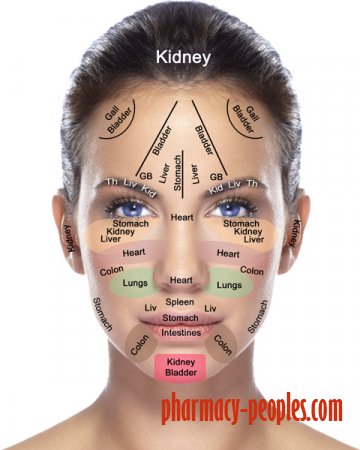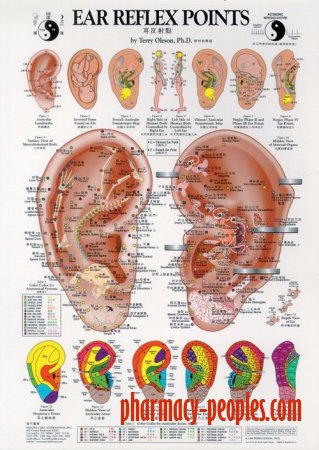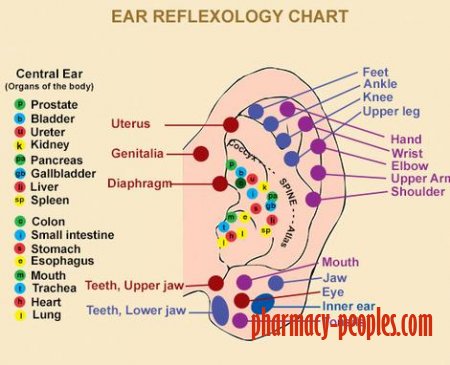The benefits of facial reflexology
Reflexology, a practice that has existed for thousands of years, was most prevalent in Eastern cultures, most notably ancient Egypt. Built around the concept that pressure points on the body correlate with organs and other parts of the body, it works through the circulatory system, nervous system, and the natural energy flow within the body. Most reflexology uses the hands and feet to stimulate these other areas, but the same can be achieved through facial reflexology.
Accounts vary on when facial reflexology was developed. One variation on the modality is the Vietnamese therapy of Dien Chan, also called multireflexology. This treatment, developed in the 1980s, is understood to be one of the foundations of any facial reflexology done today. One does not necessarily have to be a Dien Chan practitioner to offer facial reflexology.
Though it relies on ancient principles of traditional reflexology, facial reflexology has been modernized with various new theories and intents. For example, some facial reflexology practices focus on aesthetic and visible effects of the treatment (essentially a massage-based facelift), while others address internal issues such as organ dysfunction, sinusitis, circulation problems, and even cancer.
Facial Reflexology Pressure Points
In the West, reflexology is also known as zone therapy, from the theory that ten zones run lengthwise on the body. The outer edge of the left foot, for instance, is in a zone with the outside of the left hip,left arm, left shoulder, left ear, and so on. Through reflexology, a professional can address and treat all parts of the body by working solely on the feet, hands, or face. By directing pressure on each point, the therapist can stimulate energy flow to its corresponding reflex area, reduce inflammation, and promote healing.
Some reflex points on the face and their corresponding part of the body:
Chin: kidney, bladder
Bottom lip: intestines
Upper lip: stomach
Above the lip: spleen
Tip of the nose: heart
Sides of the nose: lungs
Ears: kidneys
Eyebrows: kidneys, liver
Upper corners of the forehead: gall bladder
Benefits of Facial Reflexology
After reflexology, people report feeling warmth, tingling, greater relaxation, and other positive sensations. Though the majority of studies to date have focused on hand or foot reflexology, the overwhelming results of this research has been positive. People who receive reflexology treatment demonstrate lowered stress and anxiety, better overall health, improved injury healing, and less difficulty going to sleep and staying asleep. Facial reflexology specifically has been shown to reduce insomnia in test subjects.
Proponents of reflexology say it stimulates energy flow within the body, directing healing energy toward specific areas of concern or injuries. Practitioners use facial reflexology to promote blood circulation, strengthen the bond between the facial skin and muscles, and release muscular tension. In addition to targeting other areas all over the body, these effects can also result in improved facial tone and tightening of the skin.
Typical Facial Reflexology Treatment
Treatments vary and depend largely on a client’s health issues and on the practitioner. One may choose to incorporate facial reflexology into a massage, while another might offer the service on its own. Facial reflexology alone can be a 30-60 minute treatment. Clients remain fully clothed and lie face-up on a massage table. Facial reflexology generally does not incorporate oils, though practitioners may use other props like warm towels, moistened washcloths, eye pillows, or a lightly scented mist to enhance the treatment.
The treatment will probably start with some light movements over the entire face and gentle stroking up toward the hairline and out toward the ears. The therapist might ask for some movement from the client, such as opening and closing the mouth, to check for any range-of-motion issues, clicking, pain, or other concerns. When focusing on pressure points around the face, the practitioner may move in small circles to stimulate these points or simply rest the fingers with slight pressure on each spot.
Facial reflexology is a noninvasive, relaxing experience that can have both acute and whole-body results even while attending to small or specific areas.
Contraindications of Facial Reflexology
Most studies pertaining to reflexology have specifically investigated health benefits of foot or hand reflexology, not facial reflexology. More research will help identify specific links between facial reflexology and any potential associated risks. In the meantime, it’s best to exercise caution by avoiding any facial reflexology treatment if you have acute pain around your face, neck, or ears. Other conditions that may prohibit facial reflexology might include:
Hemorrhaging
Swelling
Burns
Bruising
Broken skin or infectious skin issues
As with any bodywork treatment, facial reflexology should be done by a trained, credentialed professional. Clearly communicate any health issues you’re experiencing when you contact a therapist before the session, and always speak up if you experience pain or discomfort while receiving any treatment.
Ear Reflexology or Auriculotherapy
“Reflexology is a science based on the artful application of gentle pressure on reflex areas in the body, most usually hands, feet and ears, which produces harmony, health, and homeostasis.”
Auriculotherapy or Ear Reflexology is a healthcare modality in which the external surface of the ear, or auricle, is stimulated to alleviate pathological conditions in other part of the body. While originally based upon the ancient Chinese practice of acupuncture, the somatotopic correspondence of specific parts of the body to specific parts of the ear was first developed in modern France. Auriculotherapy is the integrated system of Chinese and Western practices.
Ear Reflexology can be used to treat diseases involving blood circulation, improving nutrition, nerve function, stimulate immune system, improving lymphatic function and maintaining physical stamina. According to Oriental Medicine auricular massage prolongs life and prevents disease by promoting the circulation of QI (electro-magnetic energy) and blood in the meridians. This regulates the function of the organs, restores harmony between Yin & Yang, normalizes the nervous system and activates mental acuity.
Ear Reflexology is a non-invasive method of preventing and treating pain and disease. There are three techniques commonly used in Ear Reflexology. One is self massage, two is ear acu-point pressure and three is acu-magnets or acu-pellets applied to ear acu-points.
Ear Reflexology method one is preformed by pressing, rubbing or kneading specific areas of the ear. A self massage of the ear is usually painless and can be applied instantly. Your ears are always accessible to massage. Once you become aware of your ear anatomy you can treat yourself day and night. Commonly treating digestive disorders, improving hearing and vision, reducing pain and lowering blood pressure.
Accounts vary on when facial reflexology was developed. One variation on the modality is the Vietnamese therapy of Dien Chan, also called multireflexology. This treatment, developed in the 1980s, is understood to be one of the foundations of any facial reflexology done today. One does not necessarily have to be a Dien Chan practitioner to offer facial reflexology.
Though it relies on ancient principles of traditional reflexology, facial reflexology has been modernized with various new theories and intents. For example, some facial reflexology practices focus on aesthetic and visible effects of the treatment (essentially a massage-based facelift), while others address internal issues such as organ dysfunction, sinusitis, circulation problems, and even cancer.
Facial Reflexology Pressure Points
In the West, reflexology is also known as zone therapy, from the theory that ten zones run lengthwise on the body. The outer edge of the left foot, for instance, is in a zone with the outside of the left hip,left arm, left shoulder, left ear, and so on. Through reflexology, a professional can address and treat all parts of the body by working solely on the feet, hands, or face. By directing pressure on each point, the therapist can stimulate energy flow to its corresponding reflex area, reduce inflammation, and promote healing.
Some reflex points on the face and their corresponding part of the body:
Chin: kidney, bladder
Bottom lip: intestines
Upper lip: stomach
Above the lip: spleen
Tip of the nose: heart
Sides of the nose: lungs
Ears: kidneys
Eyebrows: kidneys, liver
Upper corners of the forehead: gall bladder
Benefits of Facial Reflexology
After reflexology, people report feeling warmth, tingling, greater relaxation, and other positive sensations. Though the majority of studies to date have focused on hand or foot reflexology, the overwhelming results of this research has been positive. People who receive reflexology treatment demonstrate lowered stress and anxiety, better overall health, improved injury healing, and less difficulty going to sleep and staying asleep. Facial reflexology specifically has been shown to reduce insomnia in test subjects.
Proponents of reflexology say it stimulates energy flow within the body, directing healing energy toward specific areas of concern or injuries. Practitioners use facial reflexology to promote blood circulation, strengthen the bond between the facial skin and muscles, and release muscular tension. In addition to targeting other areas all over the body, these effects can also result in improved facial tone and tightening of the skin.
Typical Facial Reflexology Treatment
Treatments vary and depend largely on a client’s health issues and on the practitioner. One may choose to incorporate facial reflexology into a massage, while another might offer the service on its own. Facial reflexology alone can be a 30-60 minute treatment. Clients remain fully clothed and lie face-up on a massage table. Facial reflexology generally does not incorporate oils, though practitioners may use other props like warm towels, moistened washcloths, eye pillows, or a lightly scented mist to enhance the treatment.
The treatment will probably start with some light movements over the entire face and gentle stroking up toward the hairline and out toward the ears. The therapist might ask for some movement from the client, such as opening and closing the mouth, to check for any range-of-motion issues, clicking, pain, or other concerns. When focusing on pressure points around the face, the practitioner may move in small circles to stimulate these points or simply rest the fingers with slight pressure on each spot.
Facial reflexology is a noninvasive, relaxing experience that can have both acute and whole-body results even while attending to small or specific areas.
Contraindications of Facial Reflexology
Most studies pertaining to reflexology have specifically investigated health benefits of foot or hand reflexology, not facial reflexology. More research will help identify specific links between facial reflexology and any potential associated risks. In the meantime, it’s best to exercise caution by avoiding any facial reflexology treatment if you have acute pain around your face, neck, or ears. Other conditions that may prohibit facial reflexology might include:
Hemorrhaging
Swelling
Burns
Bruising
Broken skin or infectious skin issues
As with any bodywork treatment, facial reflexology should be done by a trained, credentialed professional. Clearly communicate any health issues you’re experiencing when you contact a therapist before the session, and always speak up if you experience pain or discomfort while receiving any treatment.
Ear Reflexology or Auriculotherapy
“Reflexology is a science based on the artful application of gentle pressure on reflex areas in the body, most usually hands, feet and ears, which produces harmony, health, and homeostasis.”
Auriculotherapy or Ear Reflexology is a healthcare modality in which the external surface of the ear, or auricle, is stimulated to alleviate pathological conditions in other part of the body. While originally based upon the ancient Chinese practice of acupuncture, the somatotopic correspondence of specific parts of the body to specific parts of the ear was first developed in modern France. Auriculotherapy is the integrated system of Chinese and Western practices.
Ear Reflexology can be used to treat diseases involving blood circulation, improving nutrition, nerve function, stimulate immune system, improving lymphatic function and maintaining physical stamina. According to Oriental Medicine auricular massage prolongs life and prevents disease by promoting the circulation of QI (electro-magnetic energy) and blood in the meridians. This regulates the function of the organs, restores harmony between Yin & Yang, normalizes the nervous system and activates mental acuity.
Ear Reflexology is a non-invasive method of preventing and treating pain and disease. There are three techniques commonly used in Ear Reflexology. One is self massage, two is ear acu-point pressure and three is acu-magnets or acu-pellets applied to ear acu-points.
Ear Reflexology method one is preformed by pressing, rubbing or kneading specific areas of the ear. A self massage of the ear is usually painless and can be applied instantly. Your ears are always accessible to massage. Once you become aware of your ear anatomy you can treat yourself day and night. Commonly treating digestive disorders, improving hearing and vision, reducing pain and lowering blood pressure.
- Health / Beauty
- 7-01-2018, 18:29
- 2 089
- Pharmatic


